College of Science and Engineering
Current state of life science research
Establishment of the "Life Science Research Center" to pursue life phenomena through basic research capabilities and individuality
Our university's College of Science and Engineering has made great strides, publishing numerous papers and receiving high marks in the "Science and Engineering University Rankings" in the scientific journal "Newton." In April 2022, we established the "Faculty of College of Science and Engineering Life Science Research Center (LSC)." Professor Fumiyoshi Abe, Director of the LSC, spoke about the latest status of life science research at our university.

Abe Fumiyoshi
D. in 1994 from the Department of Biology, Graduate School of Science, Tohoku University. D. in Biology from Tohoku University. Dr. Kato was a group leader of the Frontier Research System for Extreme Environments Biology at the Japan Marine Science and Technology Center, a visiting researcher at the Department of Biology, Johns Hopkins University, a team leader of the Marine and Extreme Environment Biosphere Area, National Institute for Marine-Earth Science and Technology, and a visiting professor at the Graduate School of International Integrated Science and Technology, Yokohama City University, In 2010, he was appointed as Associate Professor at Aoyama Gakuin University College of Science and Engineering Department of Chemistry and Biological Science and became Professor in 2015. He specializes in cell biology, molecular biology, and pressure physiology. He is a member of the Japanese Society for Agricultural Chemistry, the Society for Extreme Environmental Biology, the Yeast Genetics Forum, and the Japanese Society for High Pressure.
 Life Sciences and LSC
Life Sciences and LSC
What kind of study is life science, anyway? All research that deals with living things is life science, but at LSC, we see it as "a study that elucidates the various life phenomena that living things create and the intricate mechanisms behind them." "What is the state of being alive? How did living organisms create the mechanisms necessary for life?" These are big-scale questions, but answering them is one of LSC's major goals. The basic unit of life is the "cell." It can also be said that we are "understanding the 'basic principles' of life at the cellular level."
Life sciences are deeply connected to our daily lives. In particular, in the three areas of medicine, food, and the environment, researchers are working hard to solve problems that must be solved in order for humanity to survive on this planet. These include medicine that aims to treat diseases and develop new drugs, research to increase food production using biotechnology, and environmental conservation that uses the power of microorganisms to eliminate soil and water pollution. At this point, many people may wonder: "What is the use of all the hard work studying cells at LSC?" "Aren't you researching the development of drugs to cure diseases or the solution of food and environmental problems?"
I think that's a reasonable question. In fact, the three areas mentioned above seem to be independent of each other, but if you trace them back to their origins, they all have in common the fact that they control the actions of "cells" or utilize the functions of "cells." In other words, detailed observation of events occurring inside cells is essential for cutting-edge research. That is why at LSC, we are working to gain a deeper understanding of cells, shed light on unknown biological phenomena, and elucidate their mechanisms.
When you hear the word "research," many people may think of something difficult that is being done in a world far away from us. However, deepening our knowledge of life sciences is very important for our health and future choices. Think about genetic manipulation and genetic testing. What if genetically modified corn, genome-edited tomatoes, genome editing to treat incurable diseases, and genetic testing to find out your future? All of these are cutting-edge technologies that are already part of our daily lives or are on the verge of being achieved. What to choose and what to discard? With the right knowledge, you should be able to choose what is beneficial without being swayed by false information.
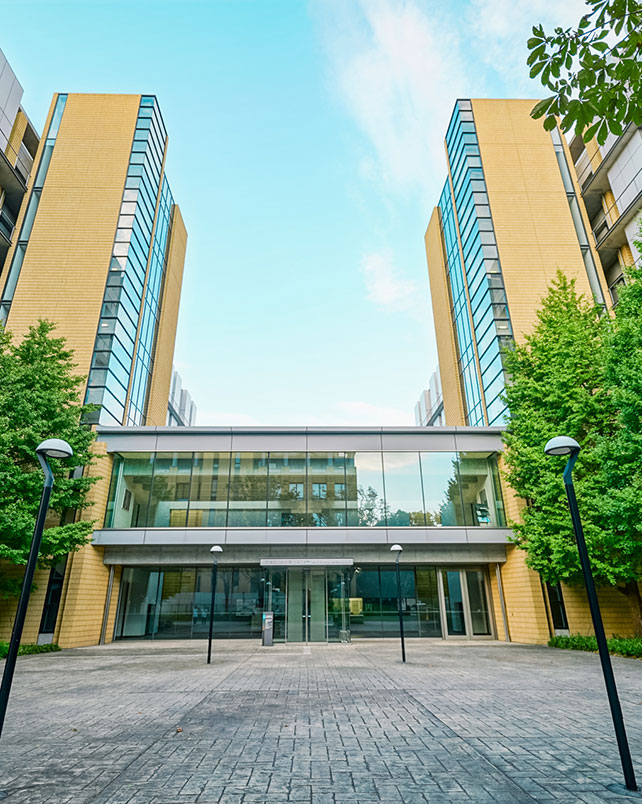 The research building on Sagamihara campus where the LSC laboratories are located. The Instrumental Analysis Center and the Advanced Technology Research and Development Center are also located in the same building.
The research building on Sagamihara campus where the LSC laboratories are located. The Instrumental Analysis Center and the Advanced Technology Research and Development Center are also located in the same building.
The Faculty of Science and College of Science and Engineering already has affiliated research centers * for engineering and information. However, life science research has not been organized. Meanwhile, the importance of the life science field, such as iPS cells, genome editing, and the threat of coronavirus, is now a common understanding around the world. Therefore, the LSC was established to consolidate life science research in the Faculty of Science College of Science and Engineering and form a sustainable research base. Our primary goal is to pursue basic research in depth and strive to connect the results to the benefit of society as a whole.
The basis of LSC is the AOYAMA VISION project, which aims to "Form an innovative foundation for dynamic measurement of biological systems and analysis of complex systems." Six laboratories from different fields collaborated to produce a variety of results over the three years from 2019 to 2021. Some of these results were featured in the "Research Highlight" section of the Journal of Cell Science, and were highly recognized internationally. With these research results as a backdrop, we applied to the Ministry of Education, Culture, Sports, Science and Technology to become an affiliated research center, which was approved and has continued to exist to this day.
*Research centers affiliated with College of Science and Engineering: Center for Instrumental Analysis, Center for Advanced Technology Research and Development Center for Advanced Technology(CAT), Center for Advanced Information Technology Research (CAIR)
 The AOYAMA VISION project that became the basis of the LSC, "Formation of an innovative foundation for dynamic measurement of biological systems and analysis of complex systems," and the establishment of the LSC
The AOYAMA VISION project that became the basis of the LSC, "Formation of an innovative foundation for dynamic measurement of biological systems and analysis of complex systems," and the establishment of the LSC
Although the LSC has its own laboratories in a research building, it is essentially a "loose community" of laboratories related to life sciences. What exactly does a loose community mean? Currently, the LSC is made up of eight laboratories belonging to Department of Chemistry and Biological Science, Department of Physical Sciences, or Department of Mathematical Sciences. However, these laboratories are by no means united and working toward a single goal. They cooperate loosely as much as they need, when they need it.
There are several reasons for this. First, basic research is driven by the "curiosity" of each researcher. Curiosity is not something that is given to us or that falls from above. It's just because it's interesting and we want to know more. Much of the research that brings innovation to society is not clear when we are doing it. That's why it's so innovative. Secondly, it's the "diversity" of research. The more homogeneous the human society and ecosystem are, the more vulnerable they are to dramatic changes in the environment. On the other hand, even in a crisis situation, if there is an accumulation of various research, one of them can provide concrete measures and hints to overcome the crisis. The extremely rapid development of the mRNA vaccine against the new coronavirus also speaks to this.
Living organisms have a great deal of genetic diversity, but what's interesting is that there are many genes whose functions we don't know. The budding yeast (baker's yeast) that I use in my research has about 6,600 genes, but we don't know what about 700 of them do. Why has yeast retained these genes for hundreds of millions of years since it first appeared on Earth? There must be some reason.
At LSC, we place the utmost importance on the individuality of our researchers, and aim to create a flexible and diverse system. Our ideal is for people with various backgrounds to come together and split up at the right time to create something new. Therefore, we re-open the call for applications for each project for a three-year term to increase fluidity. After the applied projects are reviewed by the LSC Steering Committee, research activities are carried out. Currently, there are eight research projects running, as shown on the right.
"Development of functional materials that operate in a specific environment within a tumor" Kazuhito Tanabe Laboratory (Department of Chemistry and Biological Science)
"Time-resolved measurements of anomalous diffusion phenomena in biological models and molecular dynamics calculations" Suzuki Tadashi Laboratory (Department of Chemistry and Biological Science)
"In situ analysis of microspace using multi-dimensional Raman spectroscopy/temperature imaging" Akira Sakamoto Laboratory (Department of Chemistry and Biological Science)
"Elucidation of the mechanism of secondary metabolism in actinomycetes and its application to substance production" Shigeru Kitani Laboratory (Department of Chemistry and Biological Science)
"High-speed single-molecule observation of coordinated walking motion of the molecular motor kinesin" Michio Tomishige Laboratory (Department of Physical Sciences)
"Theoretical Study on Intracellular Fluid and Liquid Phase Separation" Takahiro Sakagami Laboratory (Department of Physical Sciences)
"Mathematical modeling and analysis of infectious disease epidemic dynamics" Yukihiko Nakata Laboratory (Department of Mathematical Sciences)
At the LSC, we share various equipment owned by each laboratory, such as confocal laser microscopes, imaging devices, flow cytometry, and high-performance liquid chromatography, as well as large-scale equipment such as transmission electron microscopes installed in the Instrumental Analysis Center. In this way, life science research at our university continues to evolve every day in terms of both software and hardware.
 At LSC, each laboratory shares its own equipment, and also uses the large facilities at the Instrumental Analysis Center to conduct research (photo shows a confocal laser microscope).
At LSC, each laboratory shares its own equipment, and also uses the large facilities at the Instrumental Analysis Center to conduct research (photo shows a confocal laser microscope).
 LSC's philosophy and innovation
LSC's philosophy and innovation
LSC has three principles:
1) Respect individuality and originality
2) Persist in basic research
3) Create value
1) Respect individuality and originality
Objectivity is important in science, but it is not enough to just pile up facts. Why? Because science is a subjective human endeavor. Let's say that 99.9% of microorganisms are killed when a certain drug is administered to a culture medium. Some people see this and want to know the mechanism of action of the drug that can kill 99.9%, while others wonder how the surviving 0.1% of bacteria are different from the others. "Individuality" and "originality" imply absolute uniqueness, but this is not necessarily the case in research. There is no need to think so dramatically. The research process, starting from observation and reaching a conclusion, is very long and complicated. When you make repeated subjective choices such as "I think this way," or "I'll go this way," and eventually a story that no one has ever seen or heard is born, people call it "original research." It is important to focus on a research topic that you are passionate about, and this is something that LSC is conscious of when nurturing young researchers.
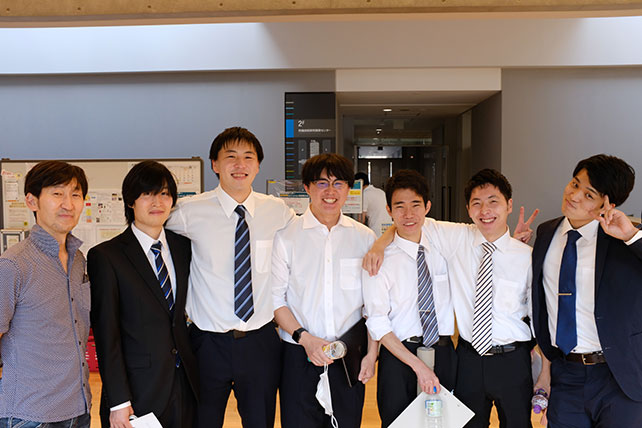 Respect individuality and originality. Each researcher's curiosity and passion for their research fosters originality. (Pictured are Master's students in the Life Science course after their midterm presentation.)
Respect individuality and originality. Each researcher's curiosity and passion for their research fosters originality. (Pictured are Master's students in the Life Science course after their midterm presentation.)
2) Persist in basic research
Basic research is the task of discovering laws and unknown phenomena that lie in the natural world and describing them in scientific terms. What is described becomes the common property of humanity and is passed down through generations. Many Nobel Prize winners began their research because they found it interesting and continued because they wanted to know more. Whether it would be useful or not would not have been clear to them, much less to those around them. However, excellent basic research has something like a "bud of application" and will surely be useful to society someday. Recently in Japan, there is a demand for immediate usefulness, making it difficult to conduct long-term basic research. The pursuit of short-term results has led to small-scale research, which at the same time weakens the motivation of researchers, creating a vicious cycle. I believe this is one of the reasons why originality is beginning to be lost from Japanese research. At LSC, we pursue basic research no matter what, and if we find something interesting, we pursue it to the end. And as I will mention next, we also value a small change of thinking that creates new value, such as "Oh? Maybe we can do that if we use this."
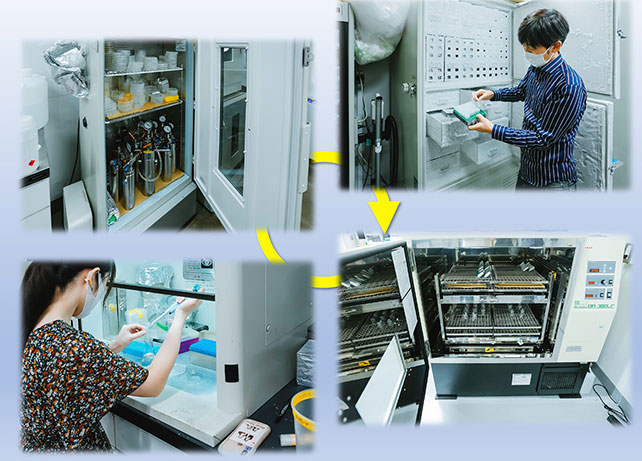 Persistence in basic research. Excellent basic research will eventually lead to practical applications. At LSC, we place great importance on basic research and see it through to completion.
Persistence in basic research. Excellent basic research will eventually lead to practical applications. At LSC, we place great importance on basic research and see it through to completion.
3) Create value
Although I have mentioned the importance of basic research, I do not neglect practical applied research. At LSC, we aim to be a base for "value creation" that develops future needs, rather than satisfying existing demand. You can call "innovation" the same thing. However, innovation is not something that can be created with the intention of doing so from the beginning. When a chance discovery leads to new value that transforms society, isn't it called innovation for the first time? When conducting research, we often notice that cells give off strange signs. "What is this? I wonder if I should look into it a little more." Research that begins with such playfulness can sometimes produce unexpected results.
You may have heard the term "interdisciplinary fusion" a lot lately. Biotechnology is a field that combines life science and engineering. In cutting-edge medical fields, artificial intelligence is being used to detect cancer and predict life phenomena. Life science in the 21st century is truly a culmination of interdisciplinary fusion. LSC is also focusing on collaboration with private companies, and recently started joint research with a major beer company. There, we are working on research with the stance of creating something new from scratch, without being conscious of practicality.
 Creating value. By mastering basic research, we aim to become a value creation hub that can create the needs of the future.
Creating value. By mastering basic research, we aim to become a value creation hub that can create the needs of the future.
 We provide full support to students who have the courage to take on difficult challenges and are passionate about something.
We provide full support to students who have the courage to take on difficult challenges and are passionate about something.
LSC also puts effort into developing human resources. What is important for students is to have the courage to challenge difficult problems and to immerse themselves in one thing. Curiosity and a spirit of inquiry are what support this. So, how can you specifically develop your skills as a researcher? It's about thinking for yourself to achieve your goal, planning an experiment, carrying it out, and getting results. Whether the results are good or bad, think about what to do next and carry it out. Repeat this cycle over and over to strengthen your thinking skills. Doesn't it seem similar to athletes? They think about how to run faster and how to increase the distance they can jump, and use their own bodies to experiment and get results. If it doesn't work, they try again. And they gradually become stronger. Young people who aim to be researchers should also have their senses sharpened by repeating this cycle. Such training is absolutely necessary for research.
We are conducting research at the world's forefront. It takes tremendous patience and concentration to venture into unknown territory and make new discoveries. There are many times when things don't go well. However, if you continue to think for yourself and experiment, one day your vision suddenly opens up and the world before your eyes suddenly becomes bright. The joy you feel at that time is something you can't experience anywhere else. It may be a little like the feeling you get when you take off the training wheels as a child and keep falling over, but one day you suddenly become able to ride a bike smoothly. The qualities required to become a good researcher are the ability to devote yourself to one thing. Things are more interesting when they are difficult. We will fully support students who have the courage to challenge difficult problems and can devote themselves to something.

Current Student Interview
Desire to contribute to society and dedicate himself to yeast model research
After graduating from graduate school, he moved to food development.
Graduate Graduate School of Science and Engineering Department of Science and Engineering, Life Science Course, Master's Program, 2nd year
Seiya Fujita
From the beginning, Fujita has been conscious of working in research and development that would allow him to contribute to society, and he is currently working on research into life phenomena using yeast as a model, saying that he wants to utilize the problem-solving skills he has developed through research. After graduating, he plans to work in product development at a food company.
VIEW DETAILS →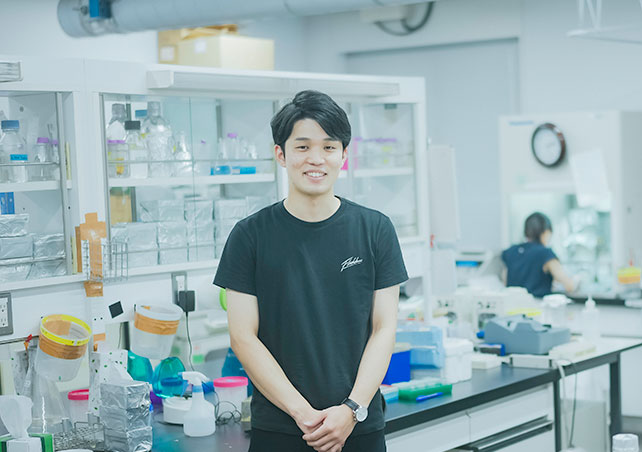
Graduate Interview
Involved in cosmetics development with emphasis on skin science from a life science perspective
Zenyaku Kogyo Co., Ltd.
Graduated College of Science and Engineering Department of Chemistry and Biological Science
Completed master's course at Graduate Graduate School of Science and Engineering
Kaori Amano
Aspiring to develop cosmetics and pharmaceuticals, Amano studied at Department of Chemistry and Biological Science in College of Science and Engineering and Engineering, and is currently involved in the development of skin care cosmetics at Zenyaku Kogyo Co., Ltd. He says that his work is diverse, from product planning to supporting sales promotion after the product is completed.
VIEW DETAILS →
Faculty Interviews
Challenging the unknown
Adaptation strategies for high water pressure environments learned from yeast
College of Science and Engineering
Professor Bunki Abe
"I don't want to do the same thing as other people." With this thought in mind, Professor Abe came across research into microorganisms that have adapted to high water pressure. His highly original research has led to discoveries that have impressed the world. Professor Abe explains the importance of basic research that can discover something from nothing.
VIEW DETAILS →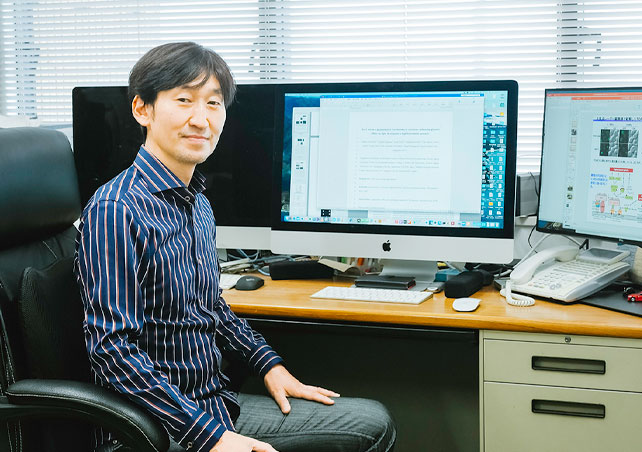
Unravelling the mechanisms of living organisms at the molecular level is
Leading to the discovery of new physical laws
College of Science and Engineering
Professor Michio Tomiyoshi
When we look at living organisms at the molecular level inside their cells, we find a world of "molecular machines (nanomachines)." We will use physics to unravel the mysteries of living organisms and explore the pursuit of new physical laws.
VIEW DETAILS →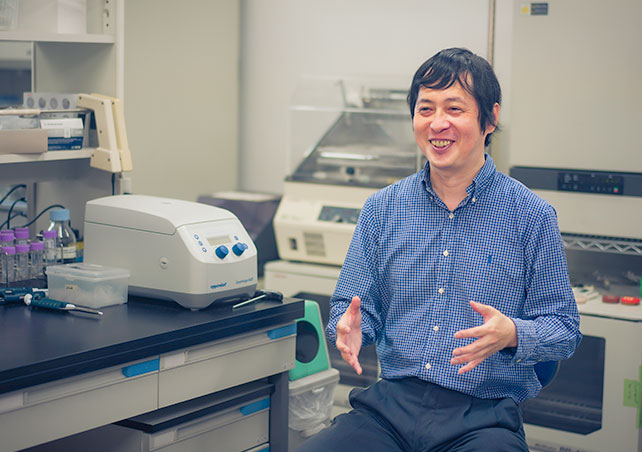
Unravelling the "molecular world" using lasers
College of Science and Engineering
Professor Tadashi Suzuki
Although we cannot see atoms or molecules directly, we can observe the "molecular world" through the reactions that occur when molecules are exposed to light. It has become clear that while reactions that occur in response to light contribute to the maintenance of life and health, they can also be the cause of disease.
VIEW DETAILS →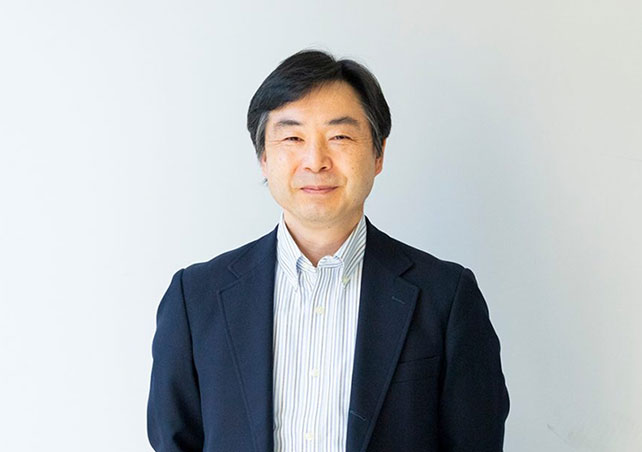
 Related Laboratories Pick UP (Links to each laboratory's website)
Related Laboratories Pick UP (Links to each laboratory's website)
life science
Molecular Genetics Laboratory (Professor Fumiyoshi Abe)
* Elucidation of the mechanism of nutrient sensing and signal transduction via TORC1 in yeast
◆ Analysis of yeast high-pressure and low-temperature growth genes obtained from comprehensive functional screening
◆ Genetic modification of yeast using genome editing
Microbial Chemistry Laboratory (Prof. Shigeru Kitani)
◆ Development of the substance production capabilities of antibiotic-producing microorganisms
Elucidation of the mutual chemical signaling network between different organisms
analytical chemistry
Bioanalytical Chemistry Laboratory (Prof. Kazuhito Tanabe)
◆ Creation of analytical techniques for pathological tissue
◆ Research into the development of functional materials utilizing nucleic acid functions
physical chemistry
Laser Photochemistry Laboratory (Prof. Tadashi Suzuki)
◆ Excited states of chemically modified nucleic acid bases and nucleosides (photodynamic therapy)
Early stages of photosensitivity
caused by nonsteroidal anti-inflammatory drugs
◆ Photoreaction using microreactors
Spectrophysical Chemistry Laboratory (Professor Akira Sakamoto)
◆ In situ analysis of living cells and biological materials using multidimensional Raman spectroscopy/temperature imaging
◆ Molecular structure analysis of short-lived and unstable molecular species and its application to functional materials science
biophysics
Biophysics, single molecule biology (Professor Michio Tomishige)
◆ Single molecule measurement of molecular motor proteins under a microscope
Chemical and mechanical energy conversion mechanisms
in biomolecular machines
◆ Dynamic order formed by numerous molecular motors
Polymer Physics, Statistical Physics (Prof. Takahiro Sakagami)
Statistical Physics of Polymers
◆ Mesoscale structure, dynamics, and rheology of soft matter
◆ Research into the dynamics and functions of DNA and chromosomes, as well as other life phenomena
mathematical science
Dynamics of differential equations, mathematical biology (Associate Professor Yukihiko Nakata)
◆ Research into mathematical models for predicting infectious disease outbreaks
◆ Research on differential equations with time delay